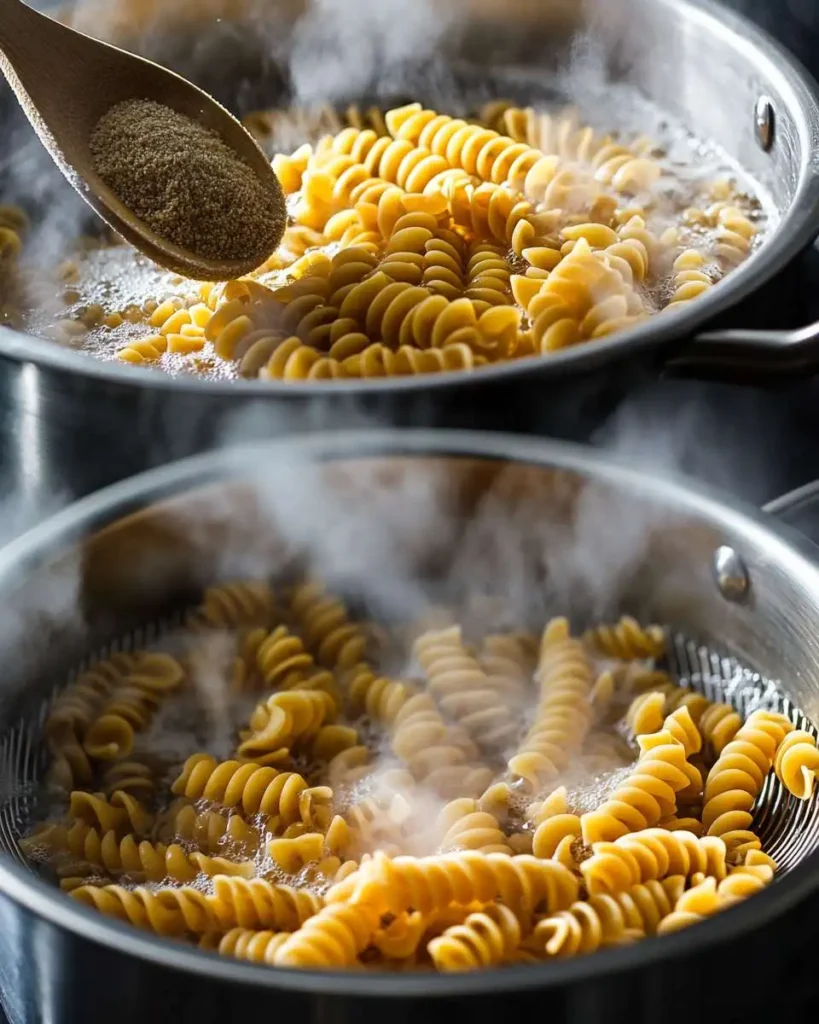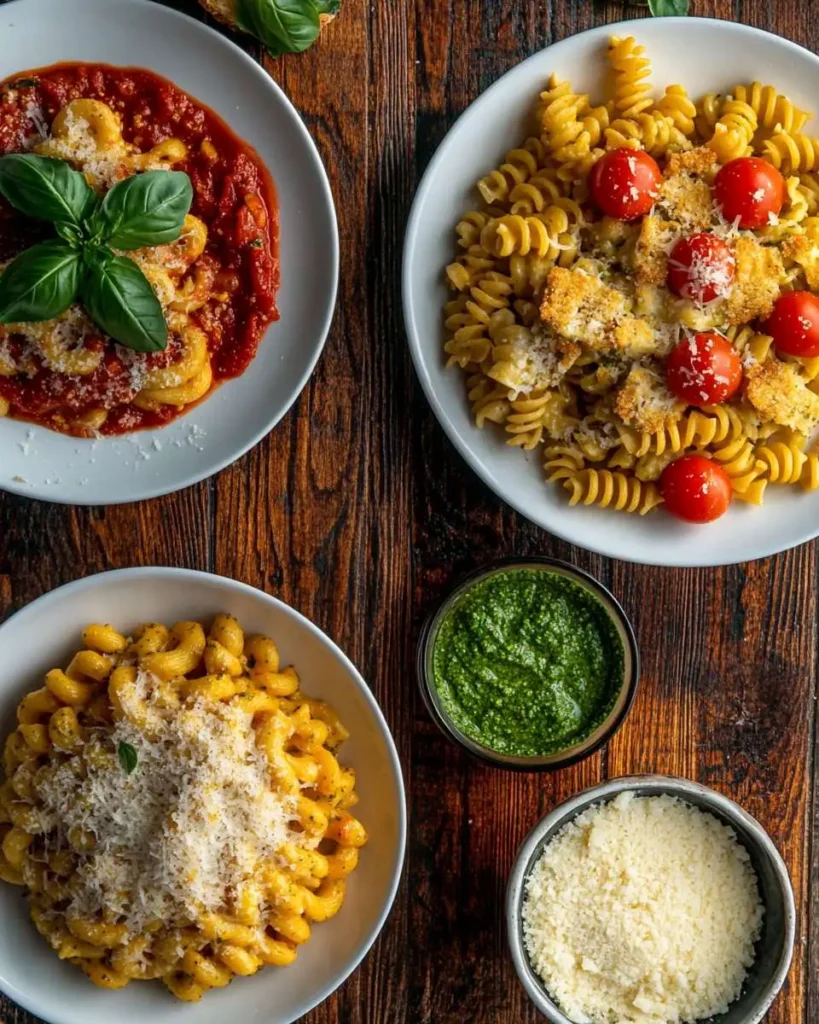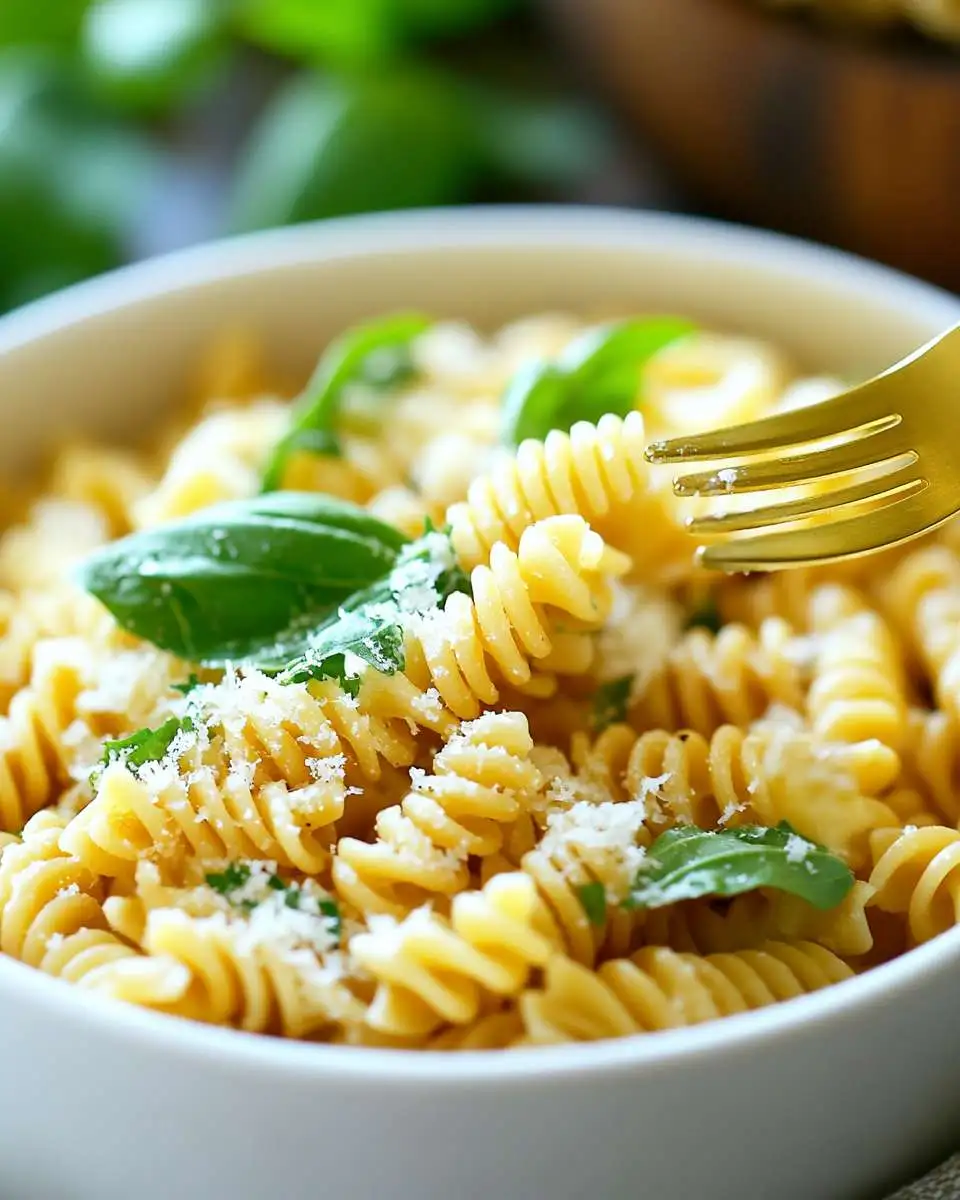Pasta lovers, rejoice! If you’ve ever been captivated by the delightful twists and curves of corkscrew pasta, this guide is for you. From choosing the best variety to mastering perfect cooking techniques, we’ll walk you through everything you need to know about this beloved spiral-shaped pasta.
In this comprehensive guide, we’ll explore:
✅ The different types of corkscrew pasta like fusilli, rotini, and cavatappi
✅ How to cook it to perfection for that ideal al dente bite
✅ The best sauces and pairings to complement its texture
✅ Easy, delicious recipes for quick meals, salads, and baked dishes
✅ Essential storage tips to keep your pasta fresh
So, whether you’re an Italian cuisine enthusiast, a home cook looking for new recipes, or just someone who loves a good bowl of pasta, let’s dive into The Complete Guide to Corkscrew Pasta!
Table of Contents
Introduction to Corkscrew Pasta
What is Corkscrew Pasta?
Corkscrew pasta is a twisted, spiral-shaped pasta that’s perfect for holding onto sauces, making every bite flavorful and satisfying. These short pasta varieties are a staple in many cuisines, especially Italian and American comfort food. Their textured ridges help absorb sauces better than smoother pasta types, making them ideal for creamy, cheesy, and tomato-based sauces.
Origins and History of Corkscrew Pasta
Ever wondered where corkscrew pasta came from? Like most pasta shapes, its roots trace back to Italy, where early pasta makers experimented with different extruded shapes to enhance texture and sauce absorption.
- Rotini, one of the most common corkscrew pasta types, originated from Southern Italy, where it was traditionally handmade.
- Fusilli, with its tighter spirals, was named after the Italian word “fuso,” meaning spindle—since it was originally shaped by wrapping pasta around a rod.
- Cavatappi, a larger, hollow corkscrew pasta, is an American favorite, commonly used in mac and cheese and baked pasta dishes.
Types of Corkscrew Pasta: Fusilli, Rotini, Cavatappi & More
Not all corkscrew pasta is created equal! While they may look similar, each variety has unique characteristics:
🌀 Rotini – A tightly wound, spiral pasta great for pasta salads and thick, chunky sauces.
🌀 Fusilli – Similar to rotini but often made from semolina flour; pairs well with pesto and meat sauces.
🌀 Cavatappi – A hollow, ridged pasta that holds creamy sauces exceptionally well; perfect for baked pasta dishes.
🌀 Spirali – A lesser-known but fun alternative to fusilli, often seen in artisan pasta brands.
Each of these pasta types serves a unique culinary purpose, making them incredibly versatile in the kitchen.
How to Choose the Best Corkscrew Pasta
Examining Ingredients: What Makes High-Quality Pasta?
Not all pasta is created equal! When choosing corkscrew pasta, start by checking the ingredient list. The best pasta is made from 100% durum wheat semolina, which ensures a firm texture and higher protein content. This helps the pasta maintain its shape, even after boiling.
For a healthier option, you can opt for:
✔ Whole wheat corkscrew pasta – Rich in fiber and has a nutty flavor.
✔ Gluten-free varieties – Made from rice, quinoa, or chickpeas for those with gluten sensitivities.
✔ Organic pasta – Free from artificial additives or preservatives.
Texture and Shape: How It Affects Cooking and Sauce Absorption
Ever noticed how some pasta holds sauce better than others? That’s because of texture. High-quality corkscrew pasta is made using a bronze die-cutting process, which creates a rough surface that clings to sauces beautifully. Avoid pasta with a too-smooth, glossy surface, as it won’t hold sauce as well.
When it comes to shape:
✔ Fusilli and rotini are great for light and chunky sauces.
✔ Cavatappi works best with thicker, creamy sauces due to its hollow structure.
✔ Spirali is excellent for baked dishes, as it holds its shape well under heat.
Nutritional Value of Different Corkscrew Pasta Varieties
If you’re watching your calorie intake, opt for whole grain or veggie-infused pasta. Here’s a quick nutritional breakdown (per 100g serving):
- Regular durum wheat pasta: ~350 calories, 12g protein, 2g fiber
- Whole wheat pasta: ~340 calories, 14g protein, 6g fiber
- Chickpea pasta: ~300 calories, 20g protein, 8g fiber
Choosing the right corkscrew pasta depends on your dietary needs, but always prioritize quality ingredients and texture for the best taste and consistency!
How to Cook Corkscrew Pasta Perfectly for the Best Texture

Boiling Tips: Water, Salt, and Cooking Time
Getting the perfect texture starts with proper boiling. Here’s the right way to do it:
1️⃣ Use at least 4-6 quarts of water per pound of pasta.
2️⃣ Bring it to a rolling boil before adding pasta.
3️⃣ Add 1-2 tablespoons of salt—this enhances flavor (don’t skip this step!).
4️⃣ Stir occasionally to prevent sticking.
5️⃣ Cook until al dente, usually 8-12 minutes, depending on the pasta type.
How to Avoid Overcooking or Undercooking
Overcooked pasta turns mushy, while undercooked pasta is too chewy. The trick? Taste-test a piece 1-2 minutes before the package’s recommended time. If it’s firm but not hard, it’s ready!
For baked dishes, undercook the pasta by 1-2 minutes since it will continue cooking in the oven.
Should You Rinse Pasta After Cooking? The Debate Explained
Many people rinse their pasta after draining, but should you?
❌ NO for hot pasta dishes – Rinsing washes away the starch that helps sauces cling to the pasta.
✅ YES for pasta salads – Rinsing cools down the pasta and prevents sticking.
Best Cooking Hacks for Al Dente Texture
- Add a dash of olive oil to prevent sticking when cooking large batches.
- Save ½ cup of pasta water before draining—it helps thicken sauces!
- Finish cooking pasta in the sauce for 1-2 minutes to absorb more flavor.
Mastering these simple techniques will elevate your pasta game, making your corkscrew pasta dishes taste restaurant-quality every time!
Best Sauces for Corkscrew Pasta: From Creamy to Tomato-Based
Why Corkscrew Pasta is Perfect for Holding Sauces
One of the best things about corkscrew pasta is its ability to trap and hold sauces between its curves and ridges. Unlike smooth pasta shapes, its spiral texture helps every bite burst with flavor. Whether you’re using a light vinaigrette or a thick, creamy sauce, this pasta shape ensures maximum sauce absorption.
Classic Tomato-Based Sauces That Work Best
For a bold, tangy kick, nothing beats a classic tomato sauce. Try pairing corkscrew pasta with:
🍅 Marinara sauce – A simple yet delicious blend of tomatoes, garlic, and basil.
🍅 Bolognese sauce – A meaty, rich ragu that clings beautifully to every twist of pasta.
🍅 Arrabbiata sauce – A spicy, garlicky tomato sauce that adds a fiery touch.
Creamy and Cheese-Based Sauces for a Richer Taste
If you love comfort food, corkscrew pasta is your best friend! Its spiral shape is ideal for thick, cheesy sauces like:
🧀 Alfredo sauce – A buttery, parmesan-based sauce that coats each bite perfectly.
🧀 Mac and cheese sauce – A gooey cheddar blend that melts into the pasta’s curves.
🧀 Carbonara sauce – A creamy, egg-based sauce with pancetta for extra depth.
Light and Healthy Sauces for a Low-Calorie Option
Prefer something lighter? No problem! Try these healthier options:
🥗 Pesto sauce – A fresh basil and olive oil blend that pairs well with fusilli or rotini.
🥗 Lemon garlic butter sauce – A bright, citrusy dressing perfect for summer dishes.
🥗 Olive oil and herb sauce – A light but flavorful option for a quick meal.
With so many sauce combinations, corkscrew pasta is an incredibly versatile choice for any meal.
Best Corkscrew Pasta Recipes

Easy Weeknight Corkscrew Pasta Recipes
Looking for quick and tasty meals? These corkscrew pasta recipes are perfect for busy nights:
🍽 Garlic Butter Parmesan Pasta – A simple dish using just butter, parmesan, and fresh garlic.
🍽 Rotini with Sausage and Peppers – A spicy, flavorful meal that comes together in 20 minutes.
🍽 One-Pot Tomato Basil Pasta – A no-fuss dish that combines everything in one pot!
Healthy Corkscrew Pasta Dishes for a Nutritious Meal
Want something light and nourishing? Try these:
🥗 Whole Wheat Fusilli with Roasted Vegetables – Packed with fiber and vitamins.
🥗 Cavatappi with Spinach and Chickpeas – A plant-based dish with plenty of protein.
🥗 Lemon Pesto Rotini with Grilled Chicken – A refreshing, protein-rich option.
Comfort Food: Baked and Cheesy Corkscrew Pasta
For ultimate coziness, nothing beats a baked pasta dish:
🔥 Baked Cavatappi Mac and Cheese – Creamy, cheesy, and topped with a crispy layer!
🔥 Cheesy Baked Rotini with Meat Sauce – A family favorite layered with mozzarella.
🔥 Fusilli al Forno – A cheesy, baked Italian classic with béchamel sauce.
Summer Pasta Salads with Corkscrew Pasta
Perfect for picnics and BBQs, these pasta salads are fresh and flavorful:
🥗 Greek Rotini Salad – Tossed with feta, olives, and a lemon dressing.
🥗 Pesto Fusilli Caprese Salad – A light dish with tomatoes, mozzarella, and pesto.
🥗 Southwest Cavatappi Salad – A zesty mix of black beans, corn, and lime dressing.
These delicious recipes prove that corkscrew pasta is great for any occasion, from quick dinners to festive gatherings!
Corkscrew Pasta in Different Cuisines
Italian Dishes Featuring Corkscrew Pasta
Italy, the birthplace of pasta, offers some of the best corkscrew pasta recipes. Whether you’re enjoying a dish in Naples or a family meal at home, corkscrew pasta always shines.
🇮🇹 Fusilli alla Caprese – A simple yet flavorful dish with cherry tomatoes, fresh mozzarella, and basil.
🇮🇹 Cavatappi al Forno – A baked pasta dish layered with béchamel sauce and parmesan.
🇮🇹 Rotini Puttanesca – A bold, spicy pasta featuring olives, capers, garlic, and anchovies.
Italian cuisine embraces corkscrew pasta for its ability to soak up sauces and hold up in baked dishes.
American Comfort Food Dishes
In the U.S., corkscrew pasta is a staple in comfort food classics. Its spiral shape makes it perfect for creamy, cheesy dishes that warm the soul.
🇺🇸 Mac and Cheese Cavatappi – The ultimate comfort food, with a gooey, cheesy sauce that clings to every twist.
🇺🇸 Buffalo Chicken Rotini Bake – A spicy, cheesy casserole featuring tangy buffalo sauce.
🇺🇸 Bacon Ranch Pasta Salad – A cold pasta dish with crisp bacon, ranch dressing, and fresh veggies.
Global Inspirations: How Other Cultures Use Corkscrew Pasta
Beyond Italy and the U.S., corkscrew pasta is a versatile ingredient in many global cuisines.
🌍 Greek Rotini Salad – A Mediterranean favorite with feta cheese, olives, and cucumber.
🌍 Asian-Inspired Sesame Fusilli – Tossed with a savory soy-ginger dressing.
🌍 Mexican-Style Cavatappi – A spicy fusion dish with chipotle, black beans, and corn.
From classic Italian recipes to modern fusion dishes, corkscrew pasta continues to bring flavor and creativity to kitchens worldwide!
Storing and Preserving Corkscrew Pasta
How to Store Dry vs. Fresh Corkscrew Pasta
Proper storage keeps your corkscrew pasta fresh and ready to use.
🛑 Dry pasta: Store in an airtight container in a cool, dry place. It lasts up to 2 years if kept away from moisture.
🛑 Fresh pasta: Refrigerate and use within 3-5 days. For longer storage, freeze it for up to 2 months.
Best Ways to Preserve Leftover Cooked Pasta
Got leftovers? Here’s how to keep them fresh:
✔ Refrigeration – Store cooked pasta in an airtight container for up to 4 days.
✔ Freezing – Toss pasta with a bit of olive oil, then freeze for up to 2 months.
✔ Reheating tips – Add a splash of water or sauce when reheating to restore texture.
How Long Can Corkscrew Pasta Last? Shelf Life Explained
- Uncooked dry pasta: 1-2 years in the pantry.
- Uncooked fresh pasta: Up to 5 days in the fridge.
- Cooked pasta: 3-4 days in the fridge, 2 months in the freezer.
Storing pasta properly ensures you always have fresh, ready-to-use corkscrew pasta for your next meal!
Corkscrew Pasta FAQs
Curious about corkscrew pasta? Here are answers to some of the most common questions!
What is the difference between rotini and fusilli?
While both rotini and fusilli have a spiral shape, their textures and twists are slightly different.
- Rotini has tighter, more compact spirals, making it ideal for thicker, chunkier sauces like Bolognese.
- Fusilli has a looser, more open twist, which allows lighter sauces to coat each piece evenly.
Both work great in pasta salads, baked dishes, and creamy sauces, but the small differences in shape affect how they hold sauce.
Can you use corkscrew pasta for mac and cheese?
Absolutely! Corkscrew pasta—especially cavatappi—is one of the best choices for mac and cheese.
Why? Because:
✅ The spirals hold onto thick, creamy cheese sauce better than smoother pasta.
✅ It has a chewy, firm texture that doesn’t fall apart easily.
✅ It makes each bite extra cheesy and flavorful.
For the ultimate comfort food, try using cavatappi or fusilli in your next mac and cheese recipe!
What is the best gluten-free alternative to corkscrew pasta?
If you’re avoiding gluten, don’t worry—there are plenty of great alternatives!
🌱 Chickpea rotini – High in protein and fiber, with a firm texture.
🌱 Brown rice fusilli – A mild, neutral flavor that pairs well with most sauces.
🌱 Quinoa cavatappi – A nutty, nutrient-rich choice that mimics traditional pasta.
Most gluten-free options cook slightly faster than regular pasta, so check the package instructions carefully.
Why does my pasta get mushy?
Mushy pasta is often the result of overcooking or using too much water. To avoid this:
✔ Always boil in plenty of salted water (4-6 quarts per pound of pasta).
✔ Cook until just al dente—check 1-2 minutes before the package time.
✔ Avoid rinsing pasta (unless for a cold dish), since it removes the starch that helps sauces stick.
By following these simple tips, you’ll always get perfectly firm, delicious corkscrew pasta!
Conclusion – Why Corkscrew Pasta is a Kitchen Staple
After diving deep into The Complete Guide to Corkscrew Pasta, it’s clear why this spiral-shaped pasta is a must-have in every kitchen.
Its unique shape and texture make it perfect for absorbing sauces, whether you’re cooking a quick weeknight meal or a hearty baked dish. From classic Italian recipes to modern fusion dishes, corkscrew pasta remains one of the most versatile pasta types out there.
To recap, here’s why corkscrew pasta should be your go-to:
✔ It pairs well with every sauce—creamy, tomato-based, or light dressings.
✔ It’s easy to cook and store, making it a great choice for meal prep.
✔ It works in various cuisines, from Italian favorites to American comfort food.
Now that you’ve explored the best recipes, cooking tips, and storage hacks, it’s time to get creative in the kitchen. Whether you’re making a cheesy baked dish, a refreshing pasta salad, or a quick stovetop meal, corkscrew pasta is always a delicious, satisfying choice.
So, grab your favorite rotini, fusilli, or cavatappi, whip up a tasty sauce, and enjoy a perfect bowl of pasta! 🍝

